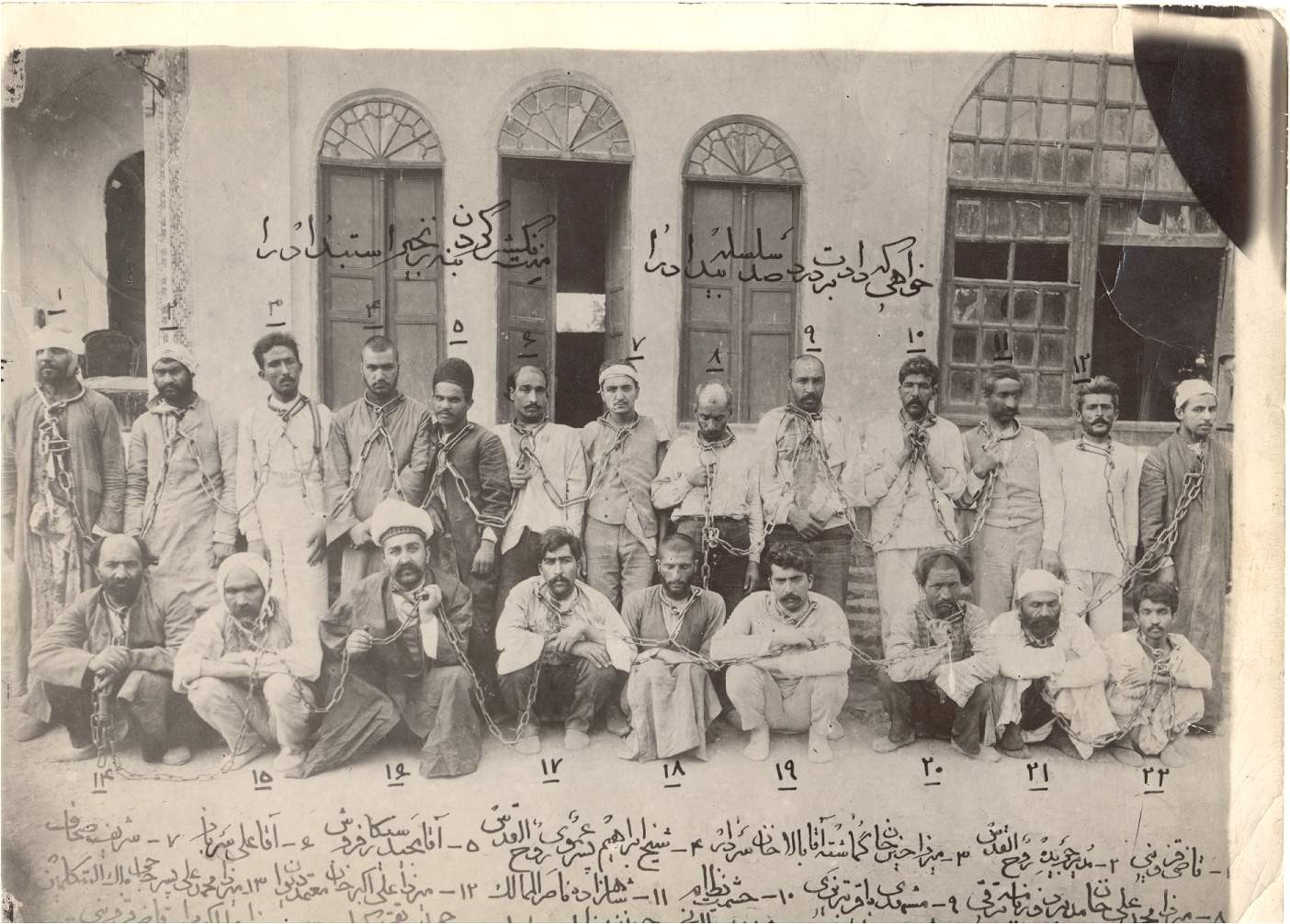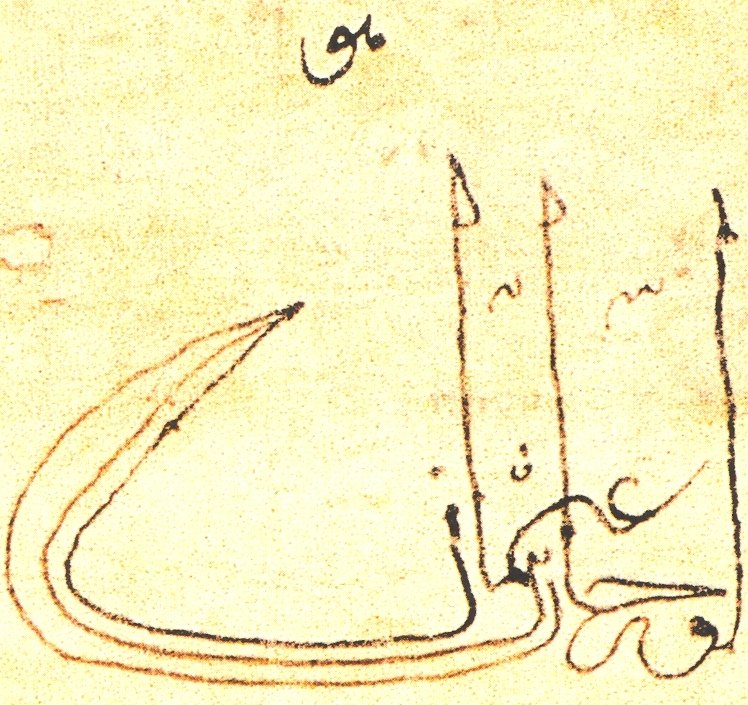|
Muhammad Ali Shah Qajar
Mohammad Ali Shah Qajar ( fa, محمدعلی شاه قاجار; 21 June 1872 – 5 April 1925, San Remo, Italy), Shah of Iran from 8 January 1907 to 16 July 1909. He was the sixth shah of the Qajar dynasty. Biography Mohammad Ali Shah Qajar was opposed to the Persian Constitution of 1906, which had been ratified during the reign of his father, Mozaffar ad-Din Shah Qajar. In 1907, Mohammad Ali dissolved the National Consultative Assembly and declared the Constitution abolished because it was contrary to Islamic law. He bombarded the Majles (Persian parliament) with the military and political support of Russia and Britain. In July 1909, pro-Constitution forces marched from Persia's provinces to Tehran led by Sardar As'ad, Sepehdar A'zam, Sattar Khan, Bagher Khan and Yeprem Khan, deposed the Shah, and re-established the constitution. On 16 July 1909, the parliament voted to place Mohammad Ali Shah's 11-year-old son, Ahmad Shah on the throne. Mohammad Ali Shah abdicated foll ... [...More Info...] [...Related Items...] OR: [Wikipedia] [Google] [Baidu] |
George Grantham Bain
George Grantham Bain (January 7, 1865 – April 20, 1944) was a New York City photographer. He was known as "the father of foreign photographic news". Biography He was born in Chicago, Illinois, on January 7, 1865, to George Bain and Clara Mather. His family moved from Chicago to St. Louis, Missouri. He attended Saint Louis University as an undergraduate to study chemistry, and later attained a law degree from the same institution. After graduation, Bain became a reporter at the '' St. Louis Globe-Democrat''. The following year he moved to the ''St. Louis Post-Dispatch'', where he became the Washington, DC correspondent. He worked for United Press before he started the Bain News Service in 1898. He died at age 79, on April 20, 1944, at Bellevue Hospital in Manhattan. George Grantham Bain Collection The George Grantham Bain Collection at the Library of Congress Prints and Photographs Division comprises approximately 40,000 glass plate negatives and 50,000 photographic prints. M ... [...More Info...] [...Related Items...] OR: [Wikipedia] [Google] [Baidu] |
Ali-Qoli Khan Bakhtiari
Sardar Asaad Bakhtiari (1856–1917) ( Luri/Persian: ), also known as Haj Ali-Gholi Khan, Sardar Asaad II (born Ali-Gholi Khan) was an Iranian revolutionary and a chieftain of the Bakhtiari ''Haft Lang'' tribe. The third son of Hossein Gholi Khan, he was one of the primary figures of the Persian Constitutional Revolution. Life In 1909, Bakhtiari tribal forces under his command with the help of modern arms from the German Empire successfully captured Tehran as part of the revolutionary campaign to force the central government to establish democratic reforms. One of his descendants is living in Graz, Austria. In the early 20th century, William Knox D'Arcy William Knox D'Arcy (11 October 18491 May 1917) was a British businessman who was one of the principal founders of the oil and petrochemical industry in Persia (Iran). The D’Arcy Concession was signed in 1901 and allowed D'Arcy to explore, o ..., by contract with Bakhtiari, obtained permission to explore for oil for ... [...More Info...] [...Related Items...] OR: [Wikipedia] [Google] [Baidu] |
Triumph Of Tehran
The Triumph of Tehran ( fa, فتح تهران, fath-e tehrān) refers to the entrance of the pro-constitutionalists in Tehran on 13 July 1909, which led Mohammad Ali Shah Qajar to seek refuge at the Russian legation in Tehran, before he was sent in exile. The event ended the period in Iranian history known as the minor tyranny. Background In 1908, revolutionaries gathered in , (led by |
United Kingdom Of Great Britain And Ireland
The United Kingdom of Great Britain and Ireland was a sovereign state in the British Isles that existed between 1801 and 1922, when it included all of Ireland. It was established by the Acts of Union 1800, which merged the Kingdom of Great Britain and the Kingdom of Ireland into a unified state. The establishment of the Irish Free State in 1922 led to the remainder later being renamed the United Kingdom of Great Britain and Northern Ireland in 1927. The United Kingdom, having financed the European coalition that defeated France during the Napoleonic Wars, developed a large Royal Navy that enabled the British Empire to become the foremost world power for the next century. For nearly a century from the final defeat of Napoleon following the Battle of Waterloo to the outbreak of World War I, Britain was almost continuously at peace with Great Powers. The most notable exception was the Crimean War with the Russian Empire, in which actual hostilities were relatively limited. How ... [...More Info...] [...Related Items...] OR: [Wikipedia] [Google] [Baidu] |
Russian Empire
The Russian Empire was an empire and the final period of the Russian monarchy from 1721 to 1917, ruling across large parts of Eurasia. It succeeded the Tsardom of Russia following the Treaty of Nystad, which ended the Great Northern War. The rise of the Russian Empire coincided with the decline of neighbouring rival powers: the Swedish Empire, the Polish–Lithuanian Commonwealth, Qajar Iran, the Ottoman Empire, and Qing China. It also held colonies in North America between 1799 and 1867. Covering an area of approximately , it remains the third-largest empire in history, surpassed only by the British Empire and the Mongol Empire; it ruled over a population of 125.6 million people per the 1897 Russian census, which was the only census carried out during the entire imperial period. Owing to its geographic extent across three continents at its peak, it featured great ethnic, linguistic, religious, and economic diversity. From the 10th–17th centuries, the land ... [...More Info...] [...Related Items...] OR: [Wikipedia] [Google] [Baidu] |
1908 Bombardment Of The Majlis
The 1908 bombardment of the Majlis of Iran took place on 23 June 1908 in Tehran, during the Iranian Constitutional Revolution, when the Persian Cossack forces, commanded by Vladimir Liakhov and other Russian officers, bombarded and suppressed the Iranian parliament, the Majlis. History Mohammad Ali Shah Qajar, the Shah of Persia, who ascended the throne in January 1907 opposed the constitution of 1906, which was ratified during regime of his father Mozzafar-al-Din Shah. p. 285-286 After his ascension, in August 1907 an Anglo-Russian agreement divided Iran into a Russian zone in the North, a British zone in the South, and a neutral zone in the center. The British switched their support to the Shah, abandoning the Constitutionalists.Mackey, Sandra The Iranians : Persia, Islam and the Soul of a Nation, New York : Dutton, c1996. p.150-55 The Shah later tried to subdue and eliminate the Majles with the military and political support of Russia and Britain. During the constitutio ... [...More Info...] [...Related Items...] OR: [Wikipedia] [Google] [Baidu] |
Sharia
Sharia (; ar, شريعة, sharīʿa ) is a body of religious law that forms a part of the Islamic tradition. It is derived from the religious precepts of Islam and is based on the sacred scriptures of Islam, particularly the Quran and the Hadith. In Arabic, the term ''sharīʿah'' refers to God's immutable divine law and is contrasted with ''fiqh'', which refers to its human scholarly interpretations. In the historical course, fiqh sects have emerged that reflect the preferences of certain societies and state administrations on behalf of people who are interested in the theoretical (method) and practical application (Ahkam / fatwa) studies of laws and rules, but sharia has never been a valid legal system on its own. It has been used together with " customary (Urf) law" since Omar or the Umayyads. It may also be wrong to think that the Sharia, as a religious argument or belief, is entirely within or related to Allah's commands and prohibitions. Several non-graded crimes are ... [...More Info...] [...Related Items...] OR: [Wikipedia] [Google] [Baidu] |
National Consultative Assembly
The National Consultative Assembly ( fa, مجلس شورای ملی, Mad̲j̲les-e s̲h̲ūrā-ye mellī) or simply Majles, was the national legislative body of Iran from 1906 to 1979. It was elected by universal suffrage, excluding the armed forces A military, also known collectively as armed forces, is a heavily armed, highly organized force primarily intended for warfare. It is typically authorized and maintained by a sovereign state, with its members identifiable by their distinct ... and convicted criminals but since 1963 including women, who might both vote and be elected. Notes and references * Afary, Janet. ''The Iranian Constitutional Revolution, 1906-1911''. Columbia University Press. 1996. {{coord, 35.6903, N, 51.4333, E, source:wikidata, display=title National legislatures 1906 establishments in Iran 1906 in law 20th century in Iran National Consultative Assembly Legislature of Iran Politics of Qajar Iran Pahlavi Iran ... [...More Info...] [...Related Items...] OR: [Wikipedia] [Google] [Baidu] |
Persian Constitution Of 1906
The Persian Constitution of 1906 ( fa, قانون اساسی مشروطه, Qanun-e Asasi-ye Mishirutâh), was the first constitution of the Sublime State of Persia (Qajar Iran), resulting from the Persian Constitutional Revolution and it was written by Hassan Pirnia, Hossein Pirnia, and Ismail Mumtaz, among others. The Constitution was also in effect during Pahlavi Iran. It divides into five chapters with many articles that developed over several years. The Quran was the foundation of this constitution while the Belgian constitution served as a partial model for the document. The electoral and fundamental laws of 1906 The electoral and fundamental laws of 1906 established the electoral system and the internal frameworks of the Majlis (Parliament) and the Senate. By the royal proclamation of August 5, 1906, Mozzafar al-Din Shah created this first constitution "for the peace and tranquility of all the people of Persia." Muhammad Ali Shah Qajar is credited with chapters 4 and 5. ... [...More Info...] [...Related Items...] OR: [Wikipedia] [Google] [Baidu] |
Tughra
A tughra ( ota, طغرا, ṭuġrā) is a calligraphic monogram, seal or signature of a sultan that was affixed to all official documents and correspondence. Inspired by the tamgha, it was also carved on his seal and stamped on the coins minted during his reign. Very elaborate decorated versions were created for important documents that were also works of art in the tradition of Ottoman illumination, such as the example of Suleiman the Magnificent in the gallery below. The tughra was designed at the beginning of the sultan's reign and drawn by the court calligrapher or '' nişancı'' on written documents. The first tughra examples are from the 14th century. Tughras served a purpose similar to the cartouche in ancient Egypt or the Royal Cypher of British monarchs. Every Ottoman sultan had his own individual tughra. Etymology There are two main schools of thought on the origins of the word tughra. The first sees it derived from a Turkic secretarial emblem called ''tughragh'', an ... [...More Info...] [...Related Items...] OR: [Wikipedia] [Google] [Baidu] |
Shia Islam
Shīʿa Islam or Shīʿīsm is the second-largest branch of Islam. It holds that the Islamic prophet Muhammad designated ʿAlī ibn Abī Ṭālib as his successor (''khalīfa'') and the Imam (spiritual and political leader) after him, most notably at the event of Ghadir Khumm, but was prevented from succeeding Muhammad as the leader of the Muslims as a result of the choice made by some of Muhammad's other companions (''ṣaḥāba'') at Saqifah. This view primarily contrasts with that of Sunnī Islam, whose adherents believe that Muhammad did not appoint a successor before his death and consider Abū Bakr, who was appointed caliph by a group of senior Muslims at Saqifah, to be the first rightful (''rāshidūn'') caliph after Muhammad. Adherents of Shīʿa Islam are called Shīʿa Muslims, Shīʿītes, or simply Shīʿa or Shia. Shīʿa Islam is based on a ''ḥadīth'' report concerning Muhammad's pronouncement at Ghadir Khumm.Esposito, John. "What Everyone Nee ... [...More Info...] [...Related Items...] OR: [Wikipedia] [Google] [Baidu] |

.jpg)




